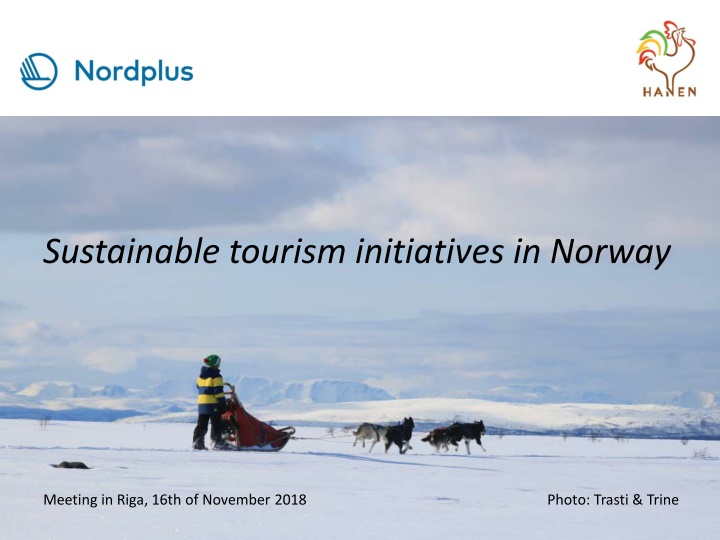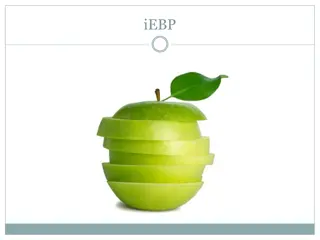
Sustainable Tourism Initiatives in Norway: Certification and Principles
Explore the sustainable tourism initiatives in Norway, focusing on certification criteria, establishment principles, and the lasting commitment to ecotourism. Discover how businesses and operators contribute to the protection of nature, culture, and local communities while providing memorable experiences for guests.
Download Presentation

Please find below an Image/Link to download the presentation.
The content on the website is provided AS IS for your information and personal use only. It may not be sold, licensed, or shared on other websites without obtaining consent from the author. If you encounter any issues during the download, it is possible that the publisher has removed the file from their server.
You are allowed to download the files provided on this website for personal or commercial use, subject to the condition that they are used lawfully. All files are the property of their respective owners.
The content on the website is provided AS IS for your information and personal use only. It may not be sold, licensed, or shared on other websites without obtaining consent from the author.
E N D
Presentation Transcript
Sustainable tourism initiatives in Norway Meeting in Riga, 16th of November 2018 Photo: Trasti & Trine
This national certification is awarded to businesses and operators that hold a high international level in ecotourism. Over 100 strict criteria on environmental performance, host-role, local community integration and purchasing must be met and often improved.
2005: Ecotourism Norway is established by GRIP 2009: Innovation Norway takes over the certification 2014: HANEN takes over the certification These criterias must be met Certified Ecotourism Norway establishments Price: 9 000 NOK for a certification period of 4 years
7 principles An Ecotourism Norway establishment: 1. Is nature- and culture based, and ecotourism is the foundation of the whole establishment. 2. Contributes actively to the protection of nature and culture, and has good knowledge of its own impact on the environment. 3. Strives to be as sustainable as possible, and balances organic, social and financial considerations. 4. Contributes positively to the community, and benefits from local labor, services and products. Strives for increased collaboration, and shows corporate social responsibility in general.
An Ecotourism Norway establishment: 5. Contributes to the presevation of listed buildings. Has local adaptation, architectual style and features as a general goal when choosing materials and solutions. 6. Has an especially high standard for hosts and guides. Dissemination and learning is an essential part of the product. 7. Offers memorable experiences, and creates arenas that give employees and guests insight into local culture, society and environment.
Many places follow sustainable principles, but being certified as a sustainable destination is an honour few qualify for. It takes years of work demonstrating their lasting commitment to providing the best possible experiences for their guests, while keeping the negative impact of tourism to a minimum. In addition, the destination must work to continually improve its business practices and relations with the local community, following principles of sustainability.
Sustainable destination Innovation Norway s Sustainable destination standard includes 45 criterias and 108 indicators to be measured, registered and monitored. The standard covers nature, culture, environment, social values, community involvement and economic viability. Measurable and continuous development are ensured through performance counts and renewing the brand every three years. Source: Global Sustainable Tourism Council
The process 1. Once a destination is chosen, Innovation Norway applies the standard through a series of implementation and monitoring methods. Then, a committed resolution is formed by the municipal council to support sustainable development in tourism and similar commitments are made by the tourism operators. After that, the implementation of the standard can occur. This includes tasks like establishing internal transport, energy saving initiatives, local food and cultural projects, signposts and building recreation trails. Jointly, a monitoring process occurs that includes documenting the overall use of local food, local culture, energy, waste production, and cultural assets in the destination. The entire process takes approximately two years 2. 3. 4. 5. Source: Global Sustainable Tourism Council






















